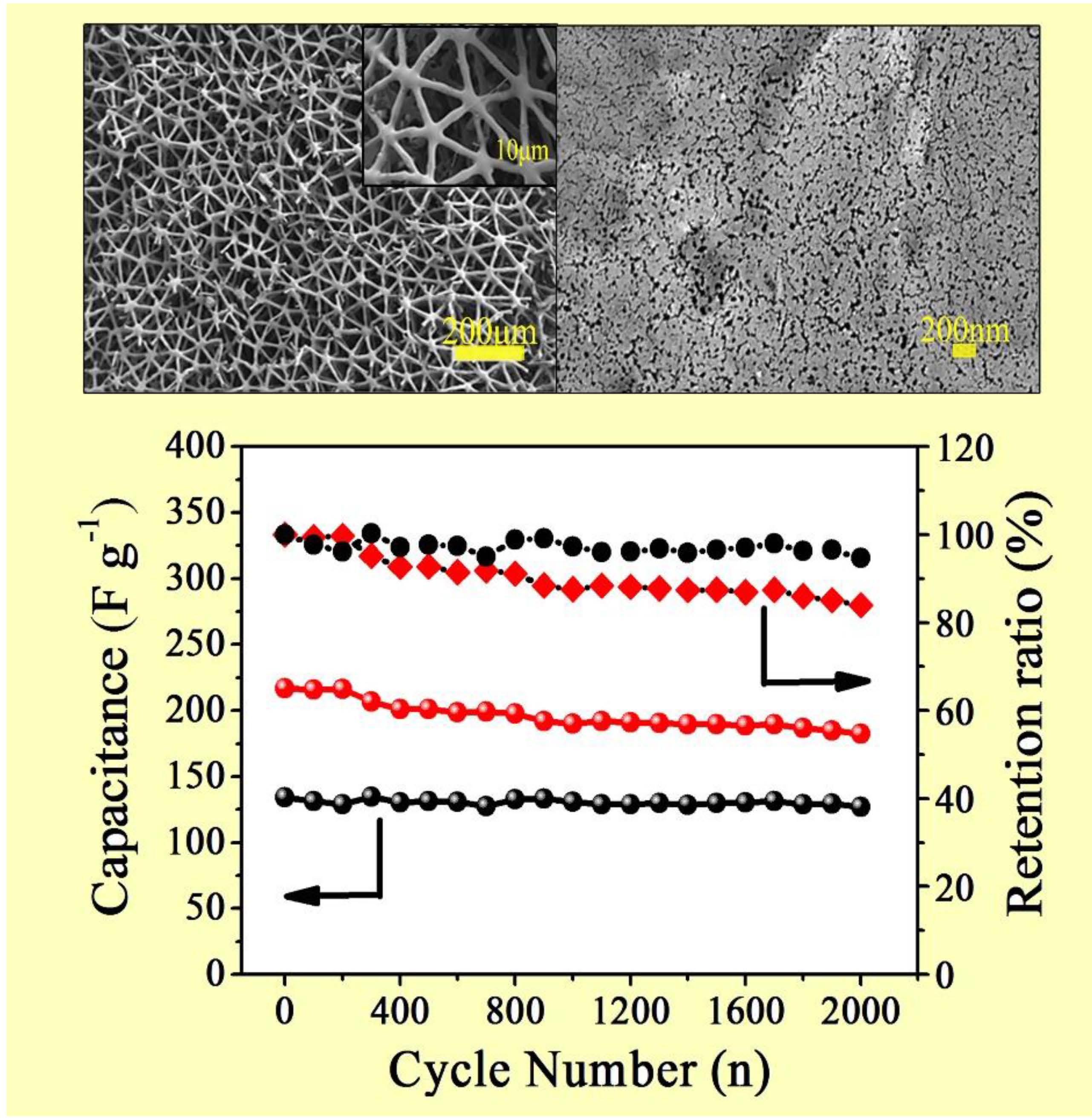Biomass materials have received attention for energy storagebecaused of the advantage of low-cost, easy-to-prepare, and eco-friendliness. Three-dimensional carbon materialswith abundant pore structure gradually becomeresearch hotspot in high-performance energy storage. In this study, an easy-to-prepare, green, light and elastic activated carbon was present using the biomass Juncus effusus (JCE) via high-temperature pyrolysis, followed by activation in air. Compared with previously reported bio-carbons, the proposed air-activated bio-carbon contributes in the fabrication of pores to preserve the interconnected, reticular and tubular structure. Moreover, the interconnected porous material also inherits the excellent tenacity of the original JCE such as the material can be bended to below 90o under an external force while maintaining structural integrity. The activated porous carbon material exhibits an enhanced electric double-layer capacitance (~210 F g-1 at 1 A g-1), with capacitance retention of ~78.62% at 10 A g-1. The interconnected porous carbon microtubes electrode as a double-layer symmetric capacitor exhibits considerable capacitance retention (84%) after 2000 cycles at 1 A g-1. The improved energy storage performance was proposed to be attributed to the shortened ionic diffusion distance and sufficient contact between the interface of the carbon electrode and electrolyte, which is resulted from the elastic, undamaged structure and types of pores. These results demonstrated that as-preparedcarbon materials have potentional application in symmetric capacitors.

